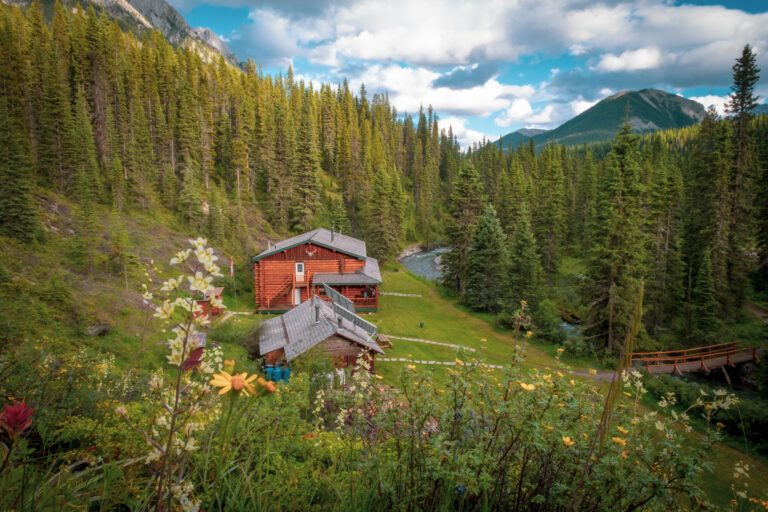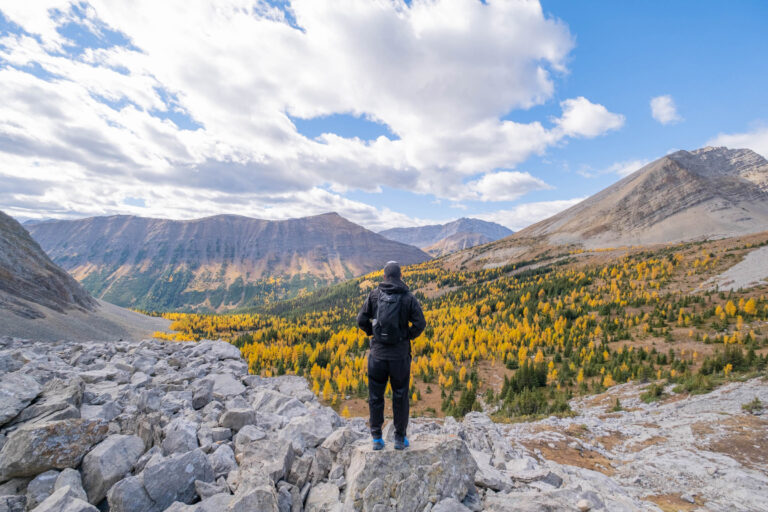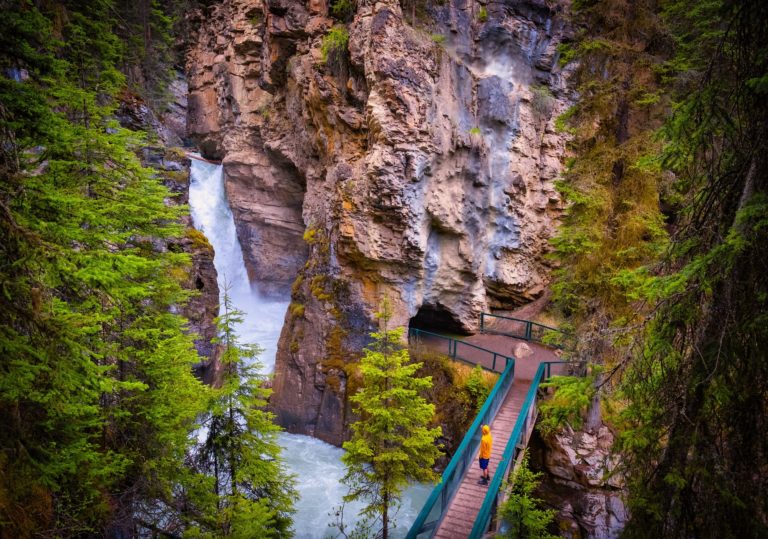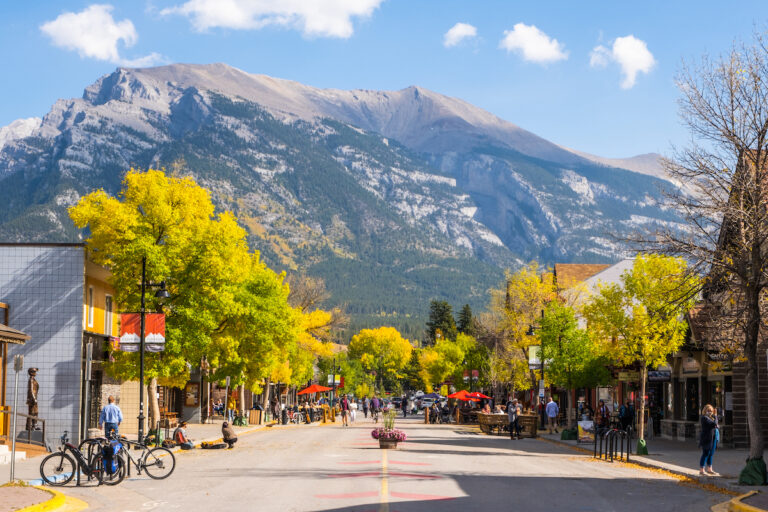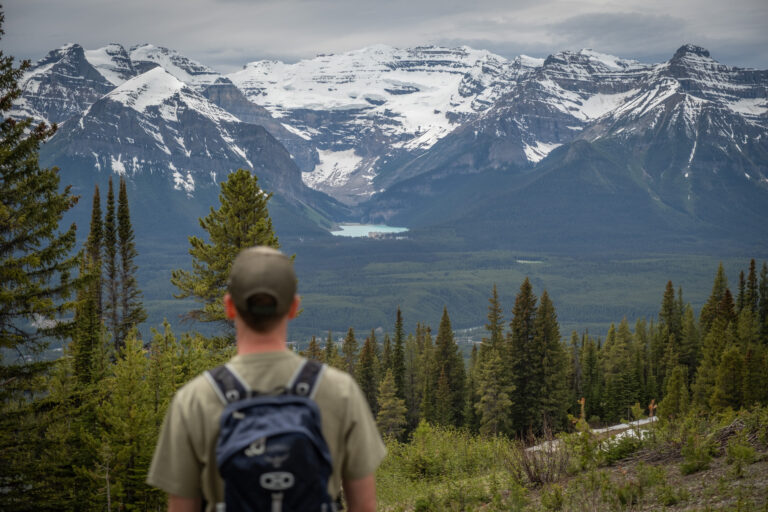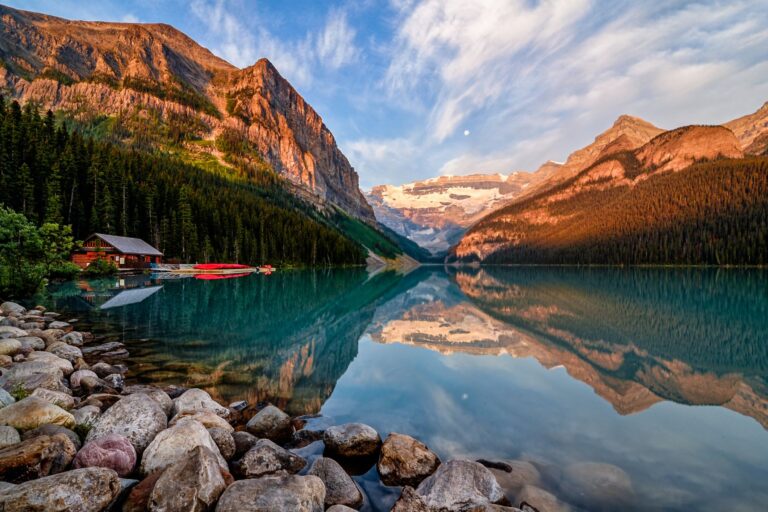7 Epic Canadian Rockies Road Trip Ideas
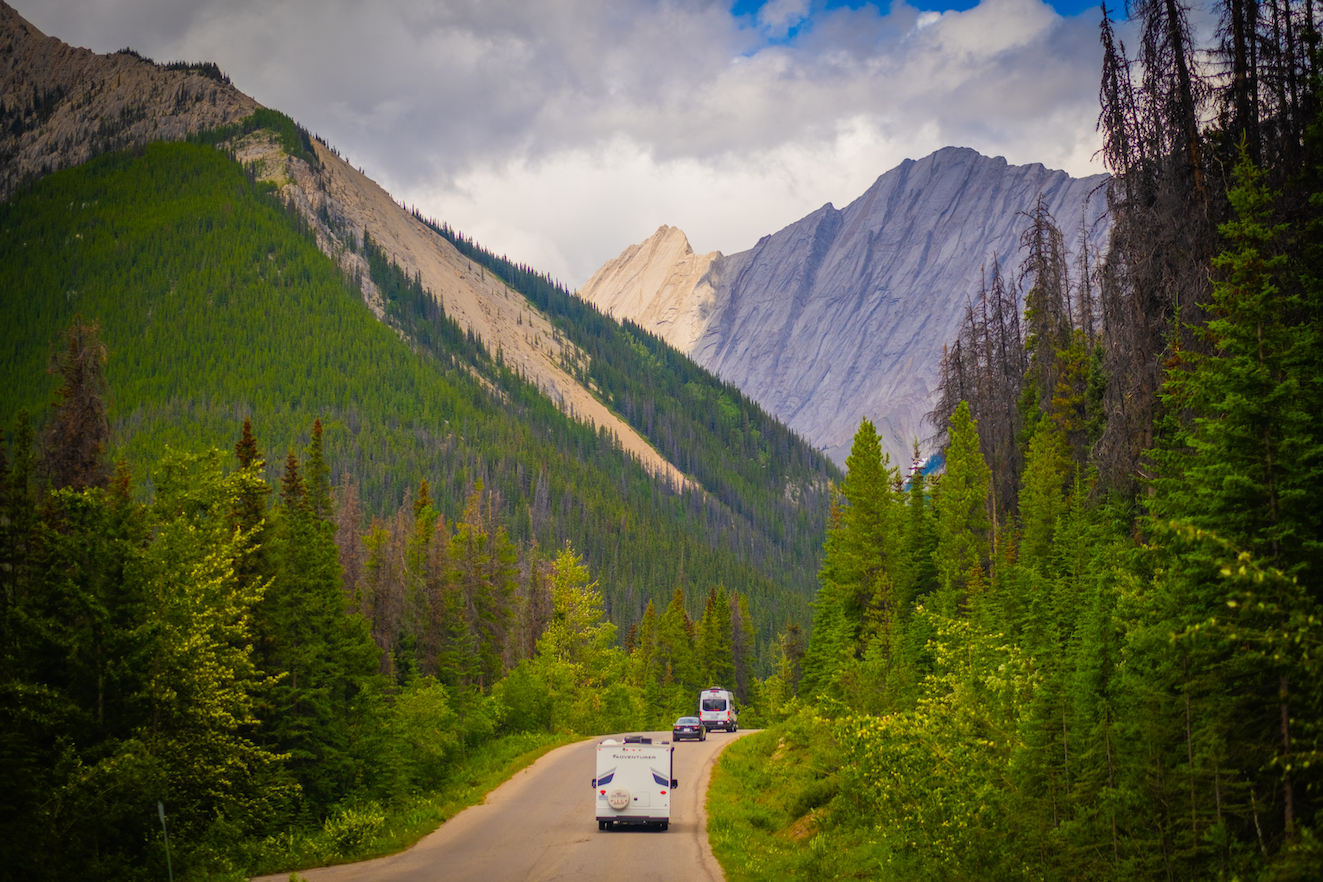
There is no shortage of epic drives to make in the Canadian Rockies. As soon as you drive through these vast mountains you’ll be met with some of the highest peaks you might ever see, glorious waterfalls, glacial lakes, and complete wilderness. We love hopping in the car on a beautiful summer or winter day and see what the road brings us.
Some days, all we want to do is jam out with a coffee in hand and enjoy the views, while other days, we’ll pack the bikes, paddleboards, or hiking equipment and make a full 10-hour day out of our road trip!
Our Favorite Roadtrips in the Canadian Rockies
Bow Valley Parkway
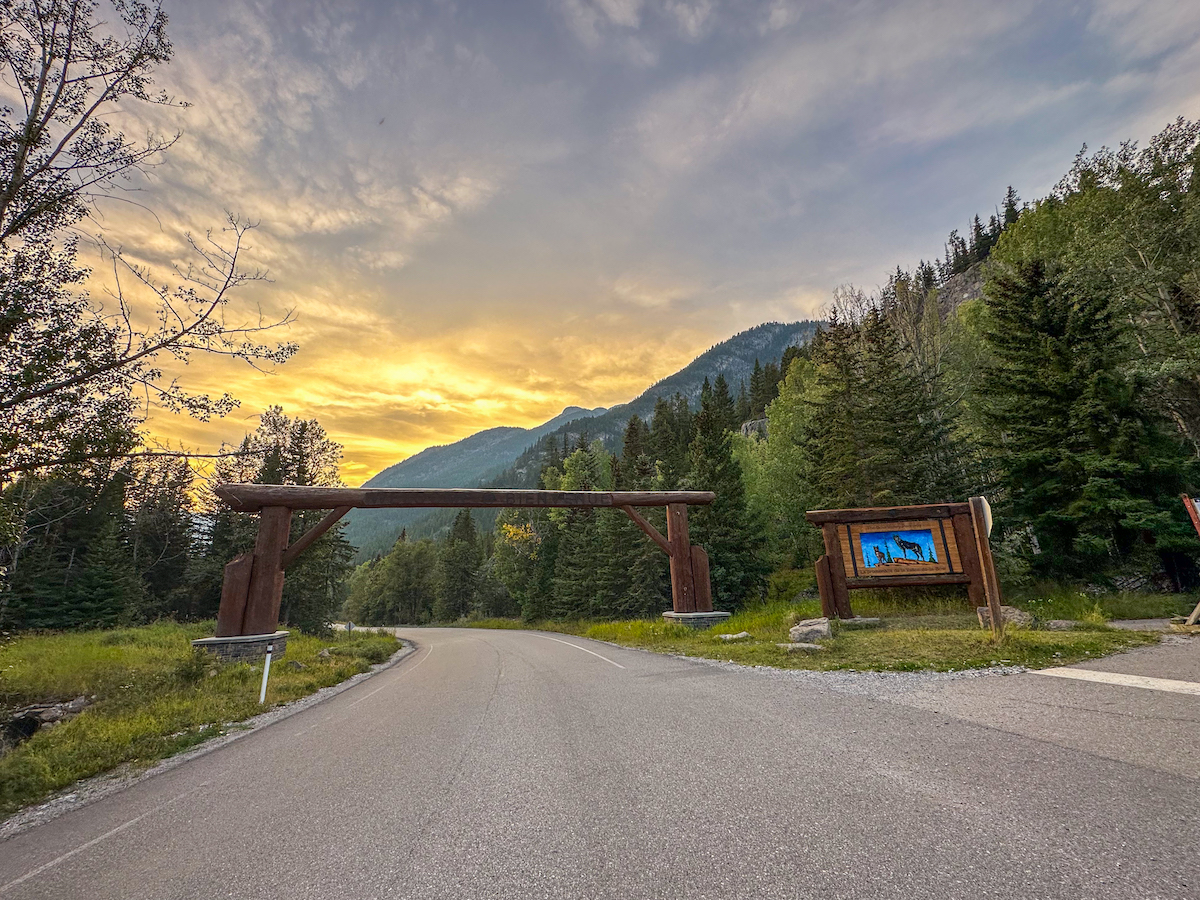
The Bow Valley Parkway (or the 1A) is a road that every visitor to Banff National Park should drive on at least once. Before the Trans Canada, the 50 km long Bow Valley Parkway was the original road linking Banff and Lake Louise in the early 1900s.
Now, it’s a road primarily used for sightseeing and outdoor recreation, but it still connects Banff to Lake Louise, just at a slower pace than the highway. It’s a great alternative to the Trans-Canada and although it’s much slower than the highway, it allows visitors ample time to get out of the car and enjoy the breathtaking views.
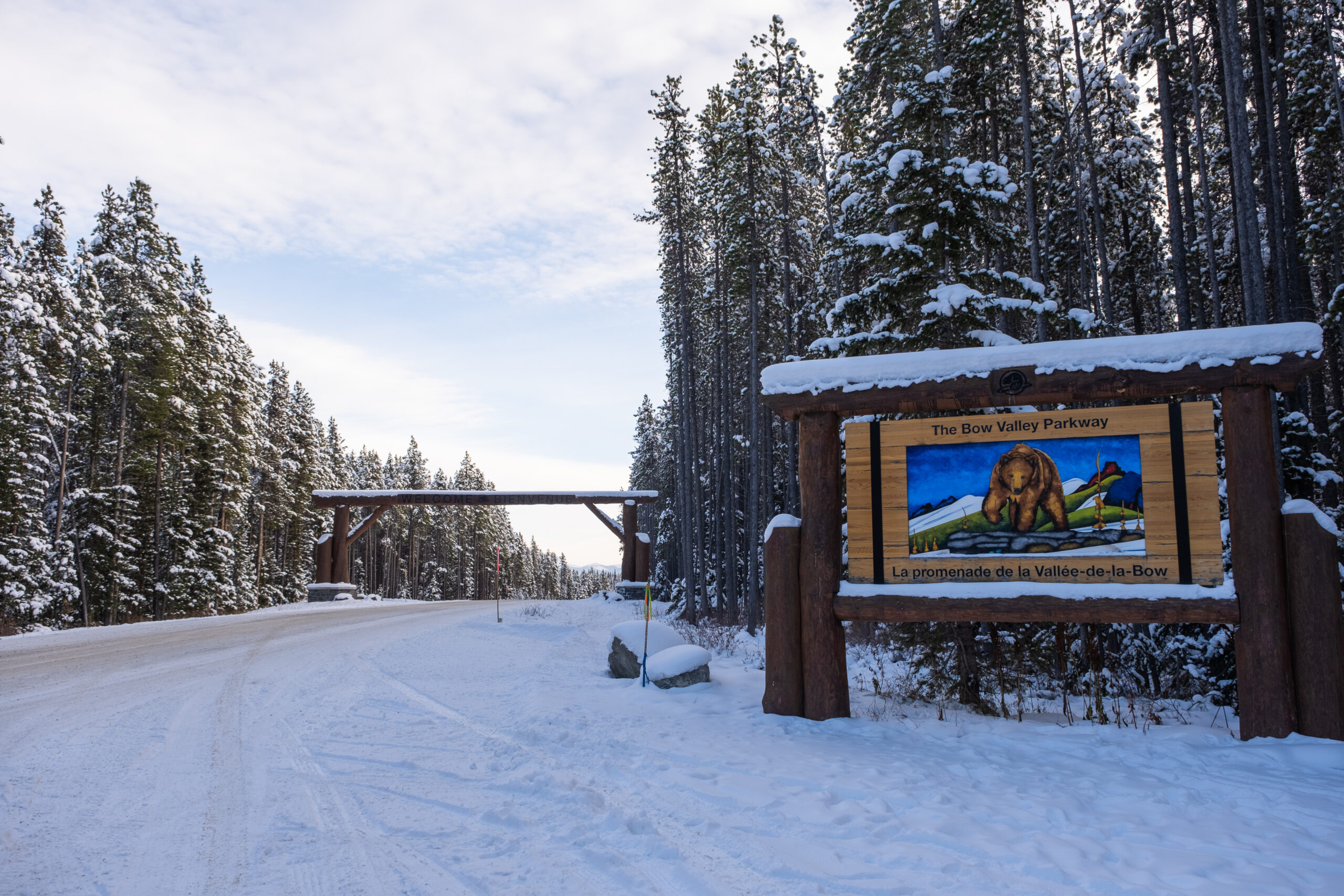
The Bow Valley Parkway runs parallel to the Trans Canada, with the Bow River between the two. While both routes are scenic, the Parkway offers much more to visitors. Along the way, there are some great hiking options, including the famous Johnston Canyon. There are also a few accommodation options and scenic pull-off points like the famous Morant’s Curve. It’s beautiful all year round, though there are some closures to be aware of during the summer months.
In the summer, Parks Canada also closes a section of the road to vehicles, making it ideal for cycling. We head here multiple times a year in the summer just to get out the bikes and cycle on this stunning road.
- How Long Does it Take to Drive: 1-3 hours.
- Things to Note: There are seasonal closures during the summer months, stay up to date on the Parks Canada website.
Lake Minnewanka Scenic Drive/Loop
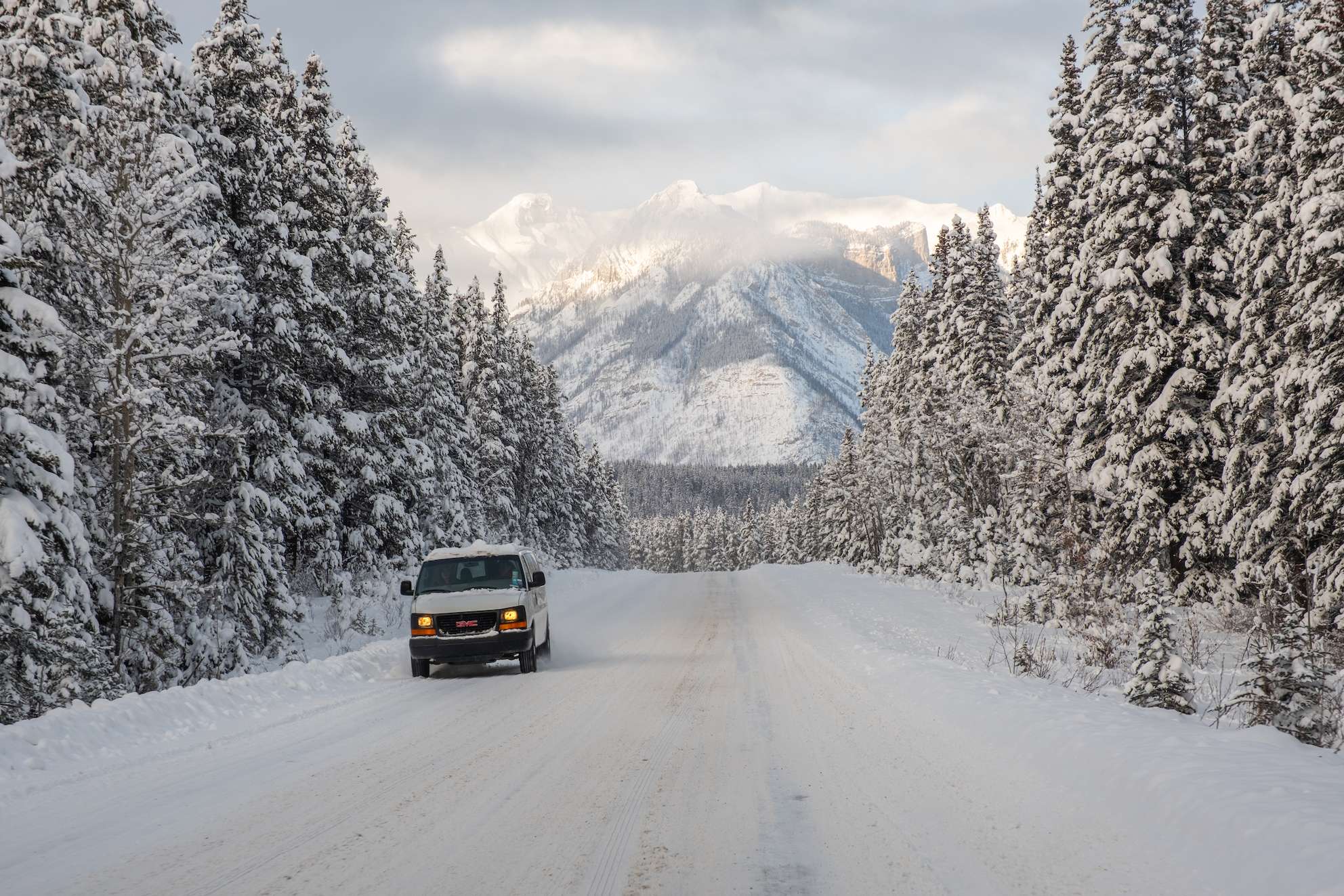
The 24 km Lake Minnewanka Scenic Drive is just outside Banff. If you haven’t visited the stops along this route yet, it’s worth a half-day of driving to see the alpine lakes.
Hop on this road, and you can see four mesmerizing lakes in 24 km. Every bend along the Lake Minnewanka Scenic Drive unveils fresh panoramas and concealed wonders. From shaded nooks and vantage points with stunning lake views to remnants of a bygone mining town, it’s possible to spend the whole day on the road if you bring your picnic supplies and a stand-up paddleboard or kayak.
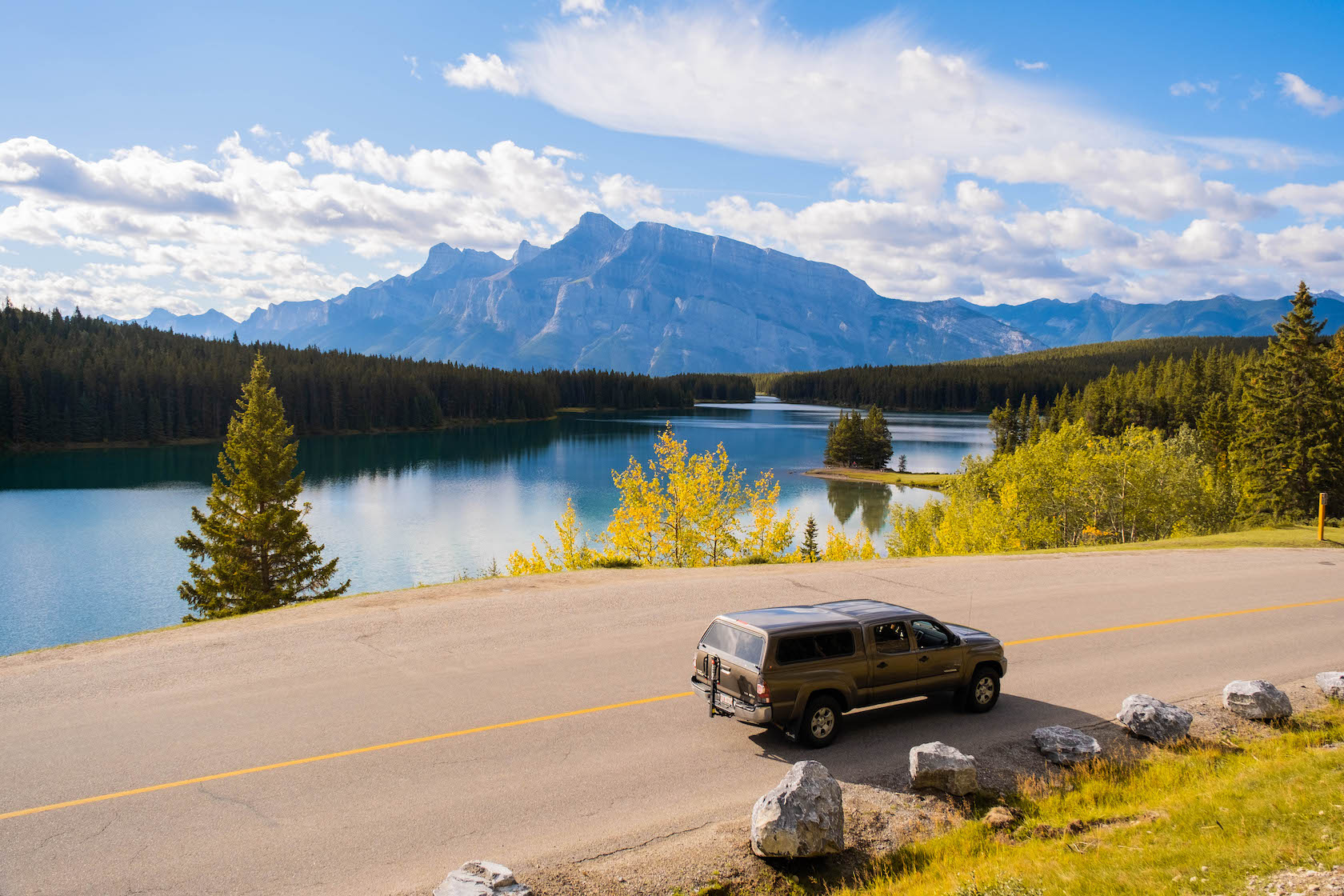
From Banff, the first stop you’ll come across is Cascade Ponds, an excellent place to hang out under Cascade Mountain. Continue on to Johnson Lake, one of the best lakes in Banff to swim. After you’ll see Two Jack Lake, we love to take the stand-up paddleboards out. Just a 5-minute drive away is Lake Minnewanka, with nice trails to walk the lake and a boathouse where you can board a cruise and head back to Devil’s Gap. If you are visiting Banff with kids or are a history buff, you may even enjoy a short visit to the Bankhead Ghost Town.
Notable hikes along the route are C Level Cirque and Alymer Lookout. One of my favorite things to do is hop on a road bike and cycle the 24 km for an awesome workout!
- How Long Does it Take to Drive: 1-2 hours, depending on how long you stop at each lake.
- Things to Note: You cannot paddle at each lake in one day per Parks Canada rules.
Icefields Parkway
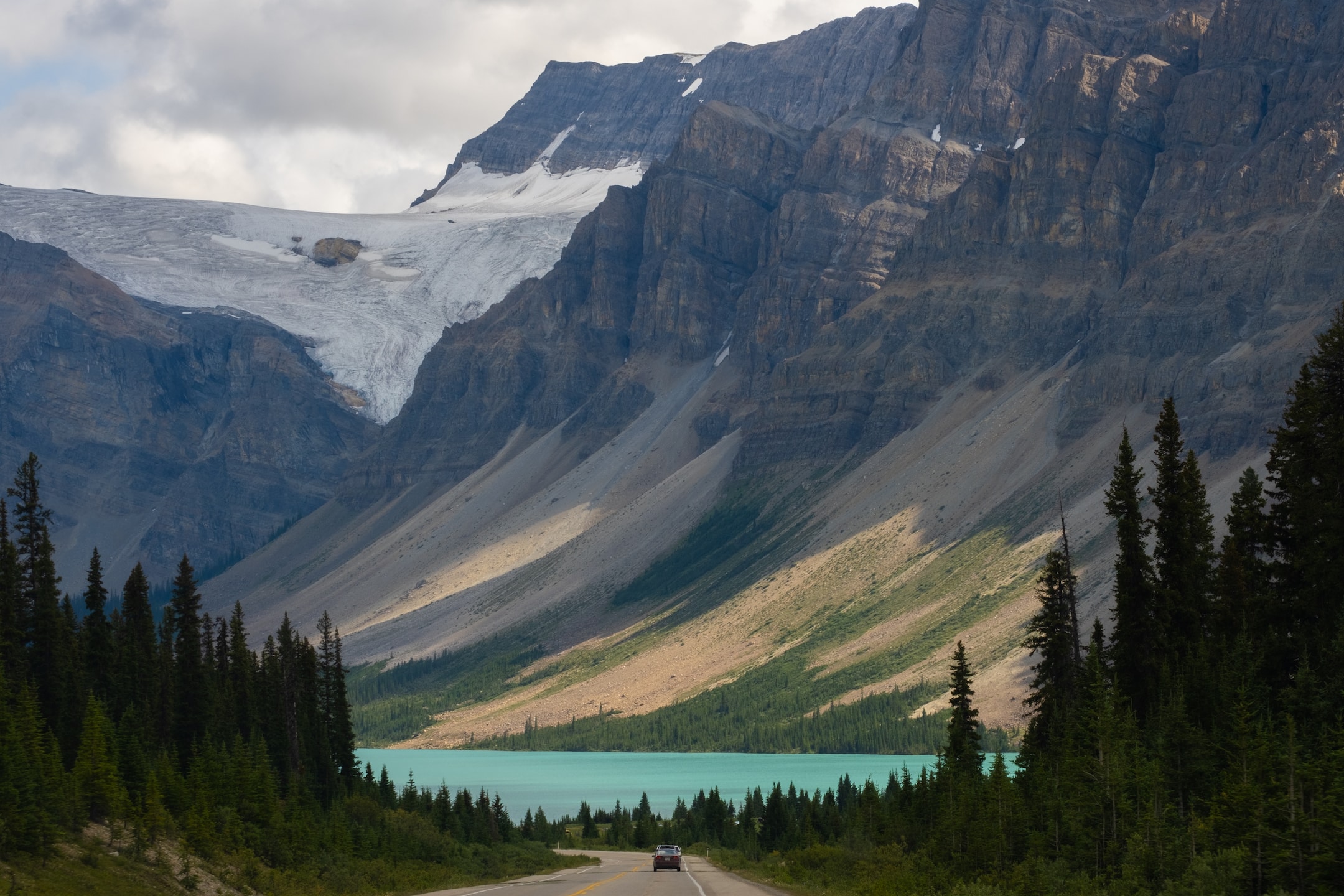
The Icefields Parkway, or Hwy 93 North, is a scenic drive between Banff and Jasper that attracts visitors from around the world. It’s a place where one can enjoy drive-in nature, surrounded by waterfalls, rock spires, ancient glaciers, and turquoise lakes.
It’s often been called the most scenic drive in the world, and I’ve yet to drive down a road as beautiful as the Icefields Parkway. This 232 km double-lane highway runs along the Continental Divide. It runs from Lake Louise in Banff to the Town of Jasper, both fantastic places. You can drive the parkway from Jasper to Banff and from Banff to Jasper.
There are many stops along the Icefields Parkway, so many that you probably won’t get to them all in one drive. We have driven the road countless times and still haven’t seen everything. So, wake up early and brace for an entire day of staring up in awe.
A few of our favorite stops include Herbert Lake, Bow Lake, Peyto Lake, Mistaya Canyon, Athabasca Falls, and Sunwapta Falls. If you want to hike, there are plenty of opportunities like Parker Ridge and Wilcox Pass. About halfway between Banff and Jasper, you’ll reach Athabasca Glacier, and it’s here you can enjoy a walk on Athabasca Glacier or book the Jasper Skywalk for a walk on a glass bottom floor. If you want to stay on the Parkway and enjoy the beauty a while longer, we highly recommend booking a night at the Glacier View Lodge.
- How Long Does it Take to Drive: 4-10 hours, depending on stops.
- Things to Note: There are no services (not even fuel) during the winter months.
Maligne Lake Road
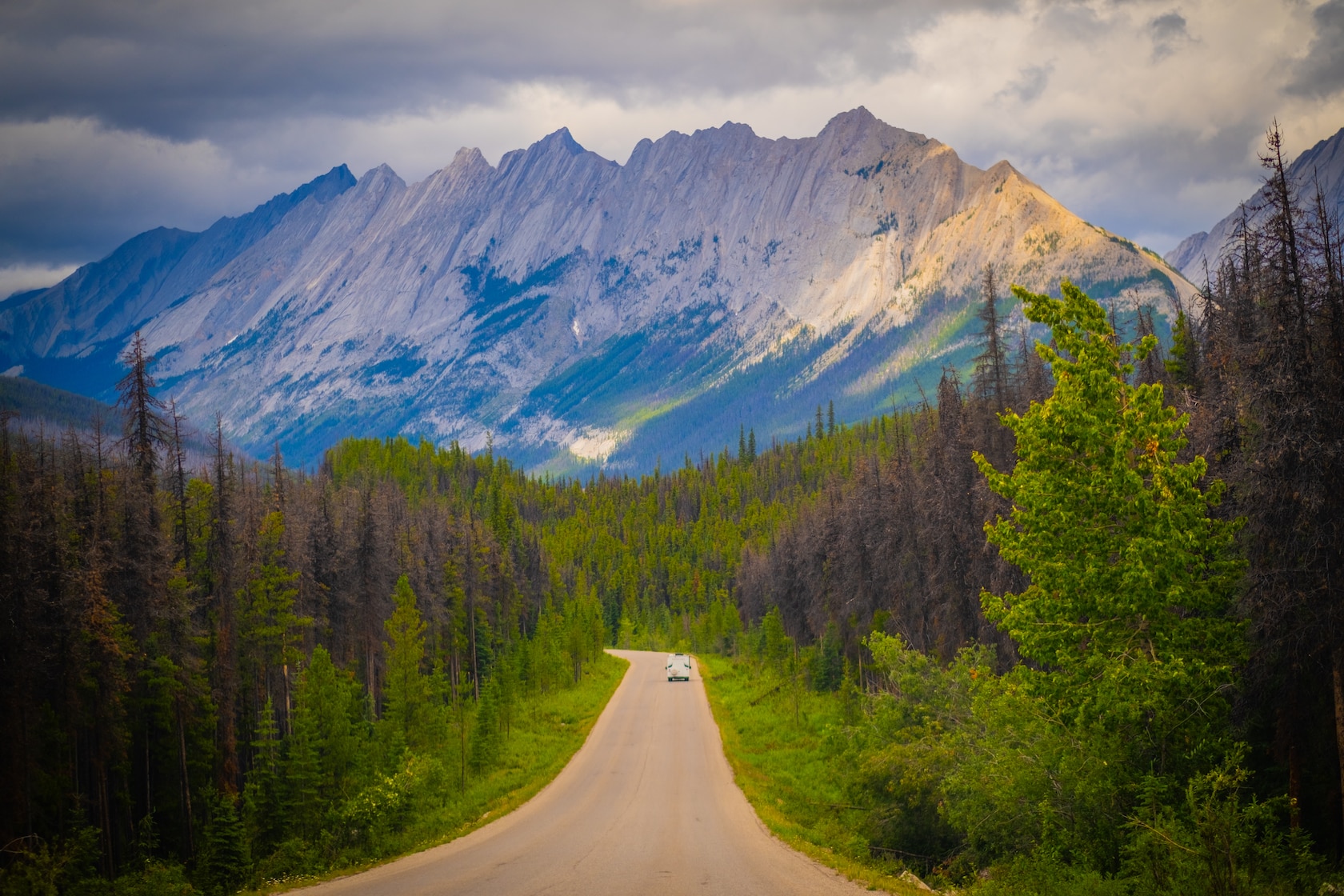
The scenic 46-kilometer journey is the most scenic road in Jasper, and is one of the best places to spot wildlife in the park. The drive starts near Jasper town and concludes at Maligne Lake. Constructed along the glacier-carved valley nestled between the Maligne and Elizabeth mountain ranges, the road offers stunning vistas of towering peaks, turquoise glacier lakes, the spirited Maligne River. The road is famous for its wildlife sightings, including elk, moose, mountain goats, bighorn sheep, white-tail deer, as well as grizzly and black bears.
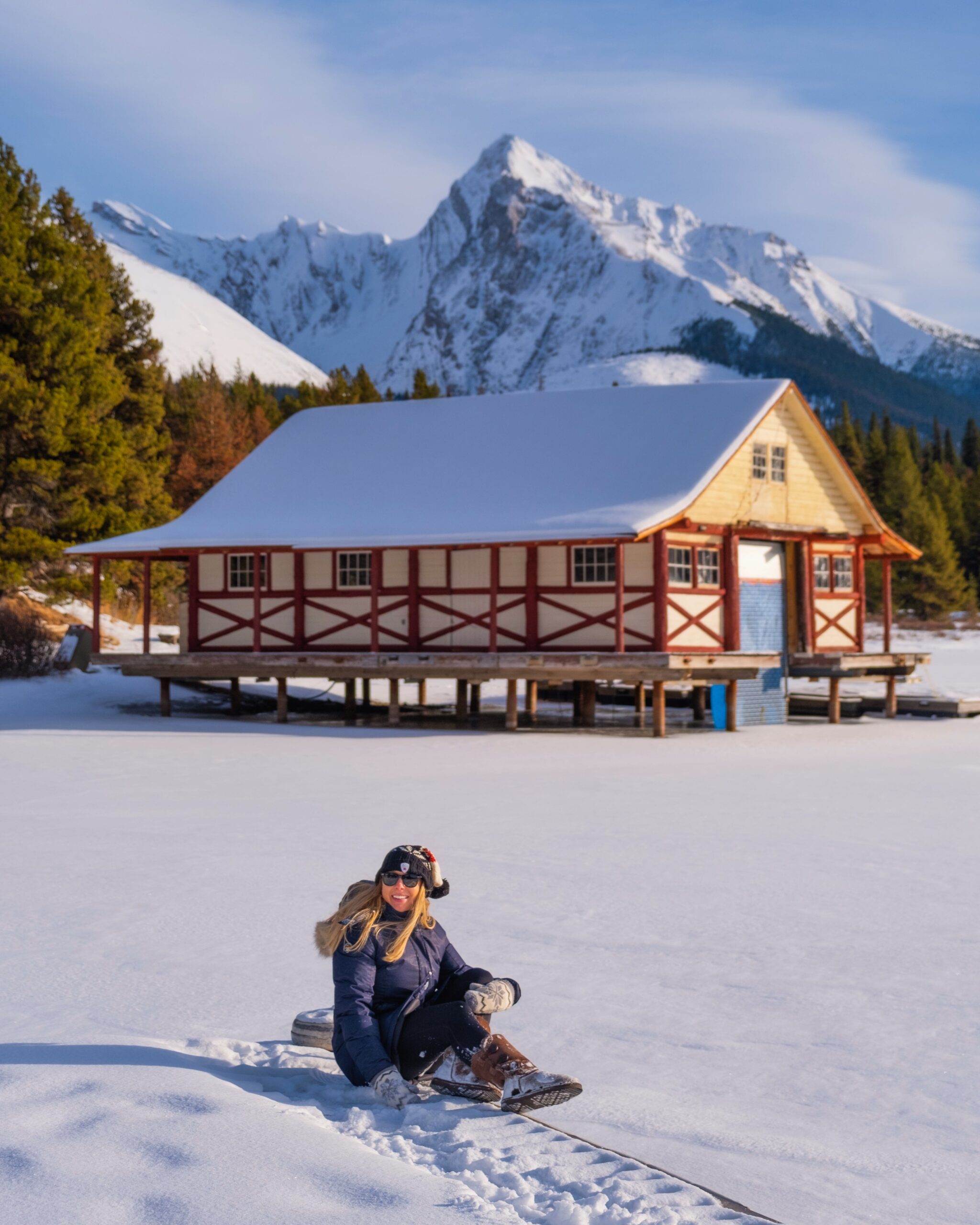
One of the first stops is Hanging Valley Viewpoint at kilometer 6, which is easy to miss if you’re not paying attention. It provides an excellent view of Athabasca Valley, Pyramid Mountain, and the town of Jasper. Continue to Maligne Canyon, one of Jasper’s famous highlights. It’s here you can get out of the car and enjoy a 1-2 hour along the canyon. The next major stop is Medicine Lake, or “disappearing lake,” because it quite literally disappears in the winter. You’ll eventually dead-end at Maligne Lake, one of the most photographed and famous lakes in the Rockies.
At Maligne Lake, you can enjoy the marvelous scenery, rent a canoe from the Boathouse, have a coffee at the Waffle House, or book a cruise out to Spirit Island.
This road is equally stunning during the winter months, though you should be prepared for winter driving conditions and to be self-reliant. There’s no cell coverage along this road, and there are no services in the winter months. All the restaurants and operations at Maligne Lake are also closed in the winter.
- How Long Does it Take to Drive: 2-4 hours. All day if going to Maligne Canyon and enjoying the cruise.
- Things to Note: Admire wildlife from a distance and avoid creating a bear jam.
Highwood Pass
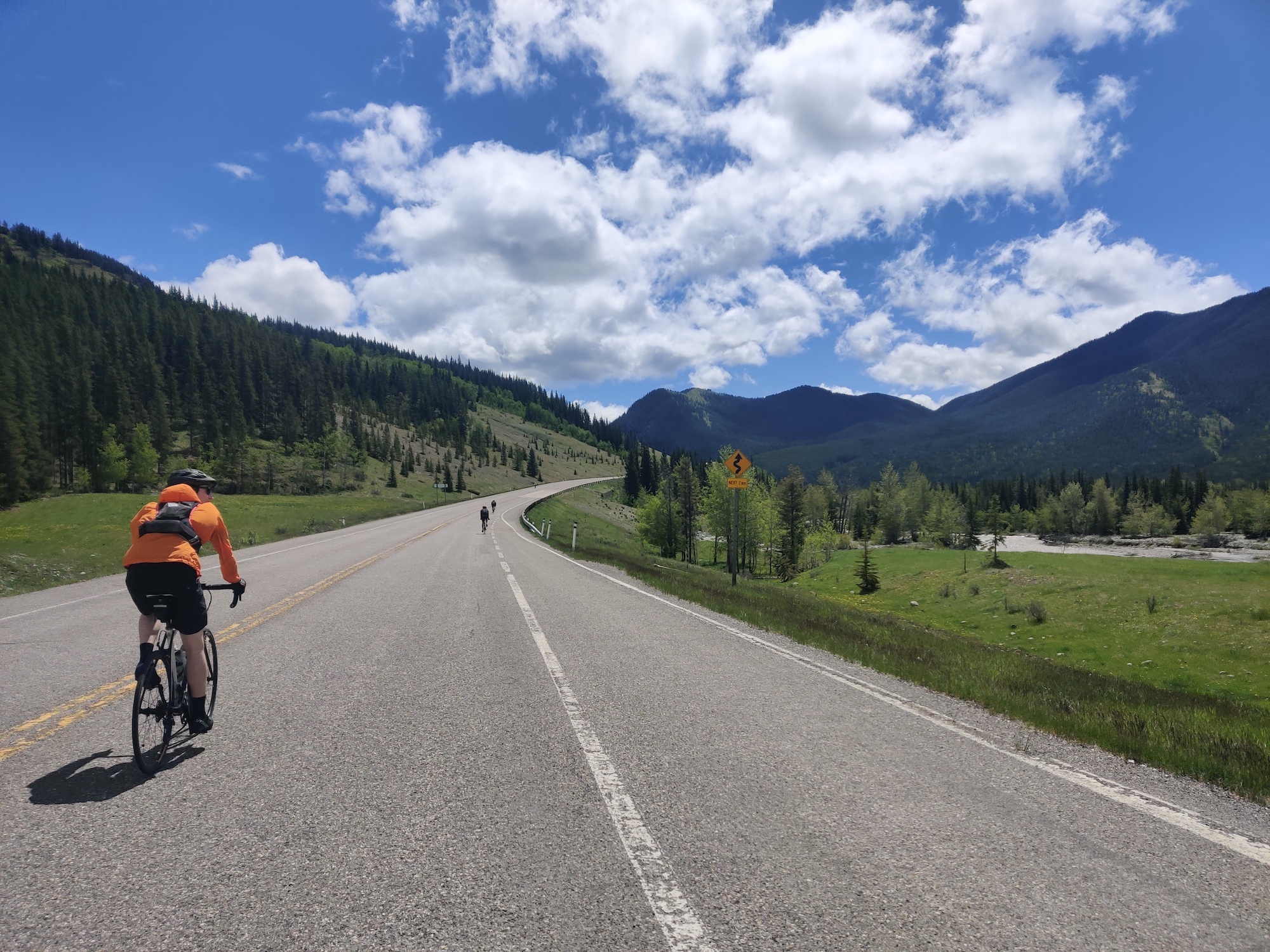
Highwood Pass is the highest paved highway in Canada, at 2,206m. It offers astounding views of the front range. The road winds through Peter Lougheed Provincial Park on Alberta Highway 40 in Kananaskis.
At the start of summer, the snow often melts before the official opening date for the highway (typically June 15th). It makes for an excellent car-free route for cyclists and a pretty nice challenge if you bike the entire route. Due to the elevation and high snow levels, the road closes in the winter, typically between December 1st and June 14, months due to avalanche risk
There are some excellent hiking trails along Highwood Pass, including Pocaterra Ridge, Arethusa Cirque, and Mist Mountain.
- Things to Note: Closed in the winter months.
Red Rock Canyon Parkway
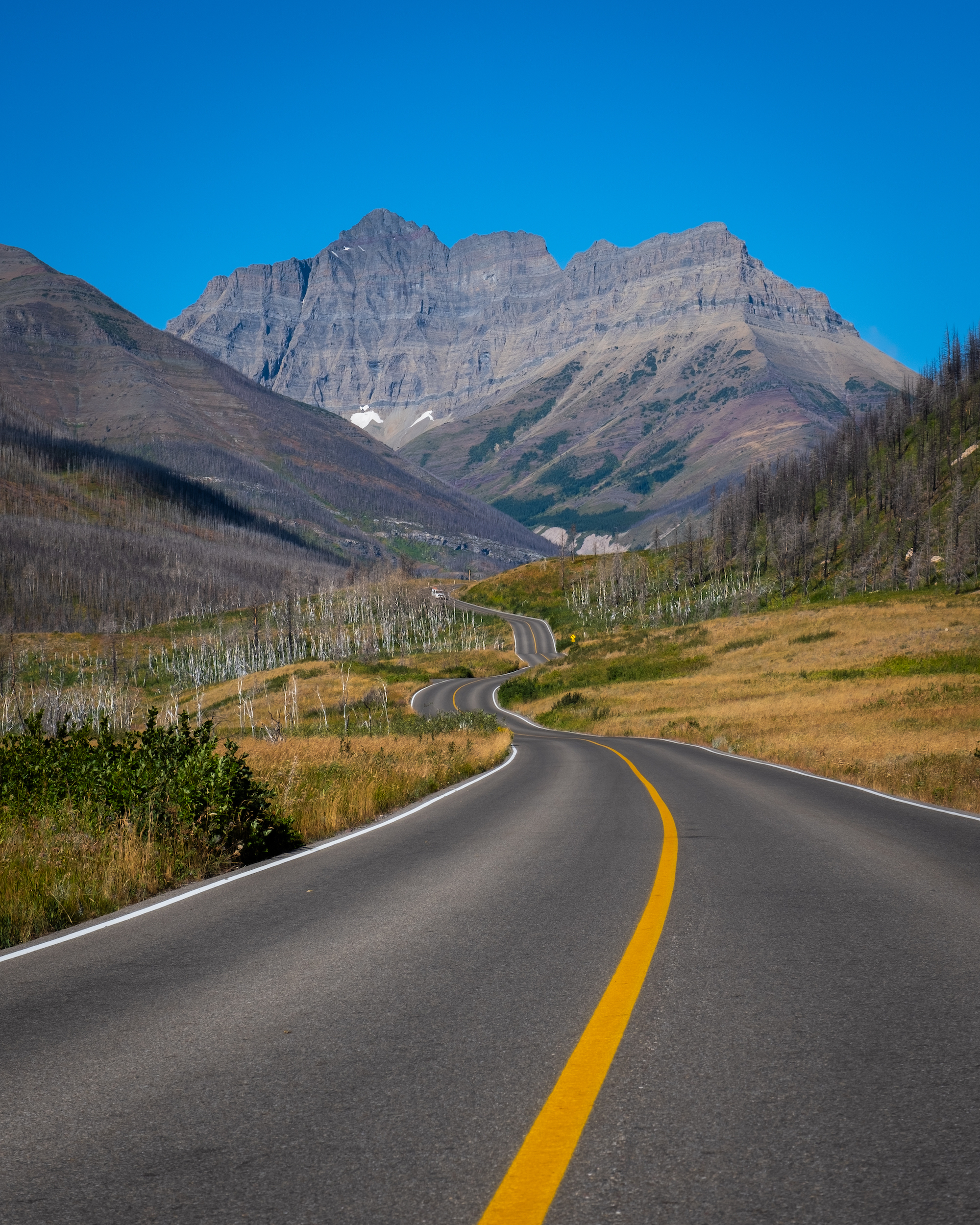
One of the most famous roads in Waterton National Park is the Red Rock Canyon Parkway. It’s 9 km of rolling hills, mountains, and grassland prairie with plenty of pull-off points. You can drive it, bring your own bike, or rent one from Pat’s downtown and cycle the whole way! Taking in the views along this route is one of the best things to do in Waterton. Even if you’re from elsewhere in Alberta, I promise you haven’t seen colors in the mountains like this before.
The famous Red Rock Canyon is at the end of the Red Rock Canyon Parkway. It is a stunning feature in the park and easy to hike around. Here, you can bring the whole family for a day of relaxation.
Smith Dorrien Trail to Kananaskis Trail (Hwy 742 to HWY40)
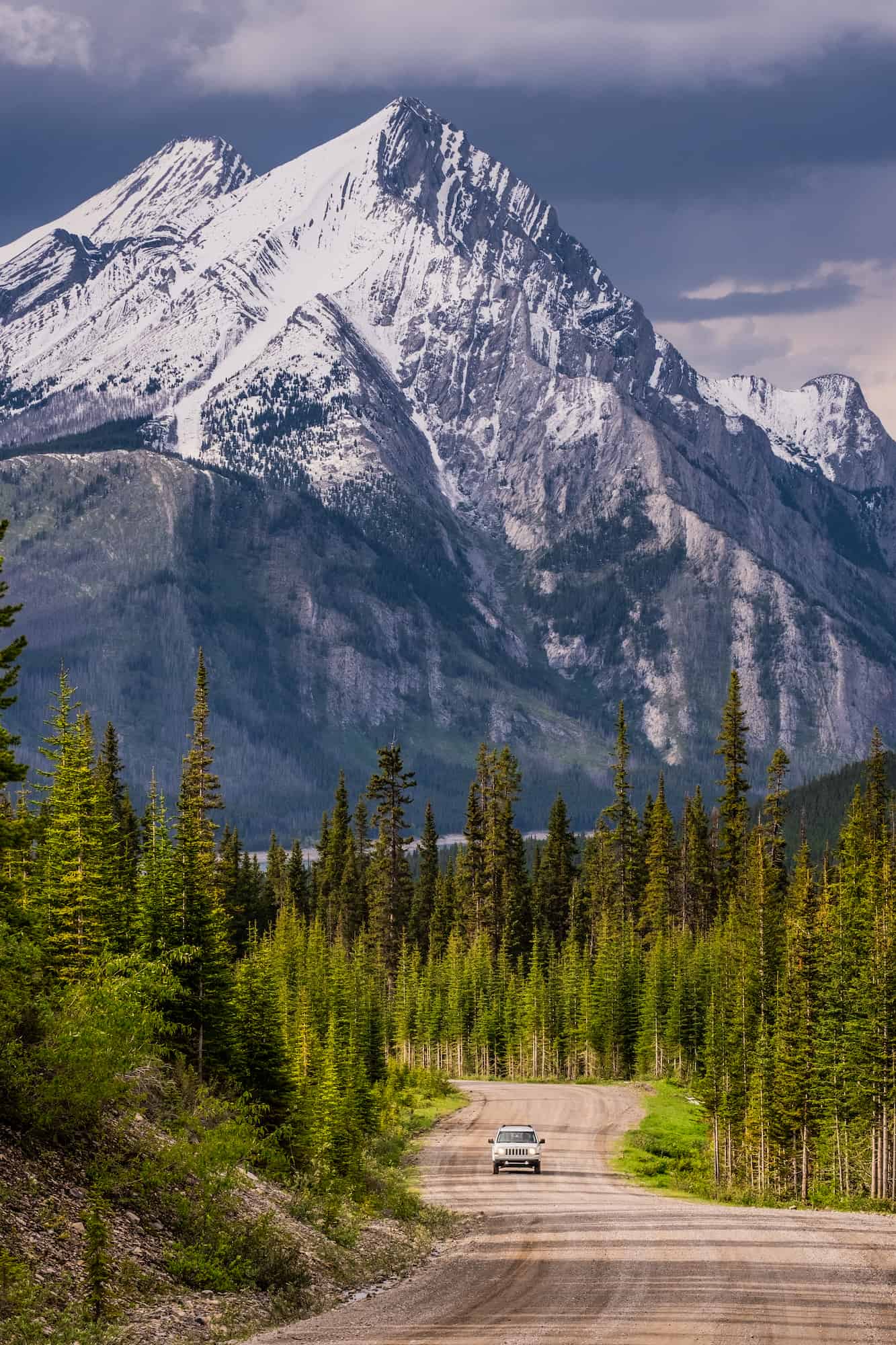
The Smith Dorien Trail is 70 km long, running from south of Canmore to Kananaskis Trail (Highway 40). We recommend starting the drive in Canmore (above Grassi Lakes) and doing the whole drive as a loop. I can’t comment on everything along the route because there is just so much! Some even say they think it’s more beautiful than the Icefields Parkway!
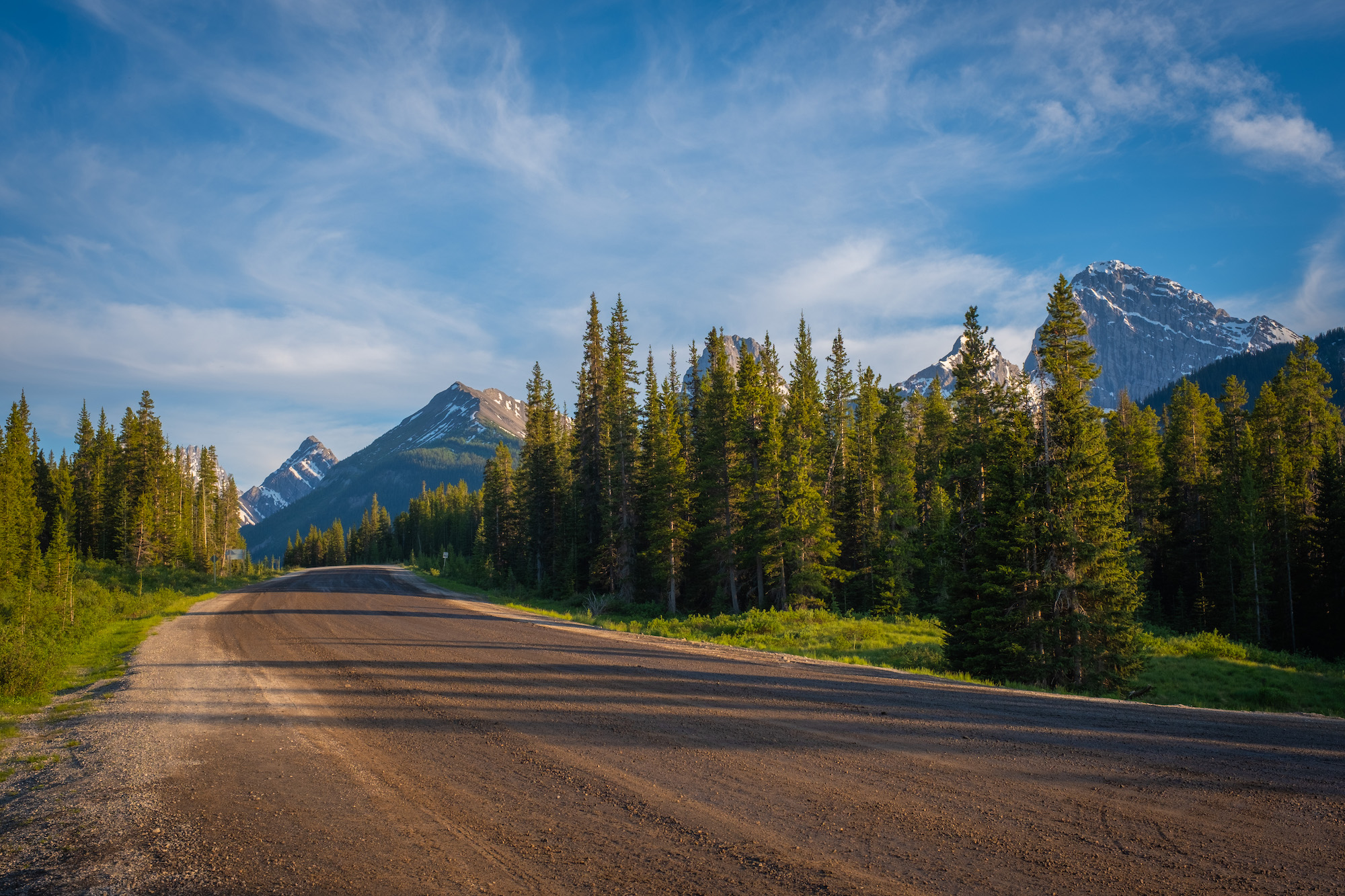
From Canmore, you’ll pass Goat Pond, where you can bring a kayak or paddleboard and enjoy the water. You’ll also pass Spray Lakes, the idyllic Mount Engadine Lodge, and the trailheads for hikes like West Wind Pass, Chester Lake, and Burstall Pass.
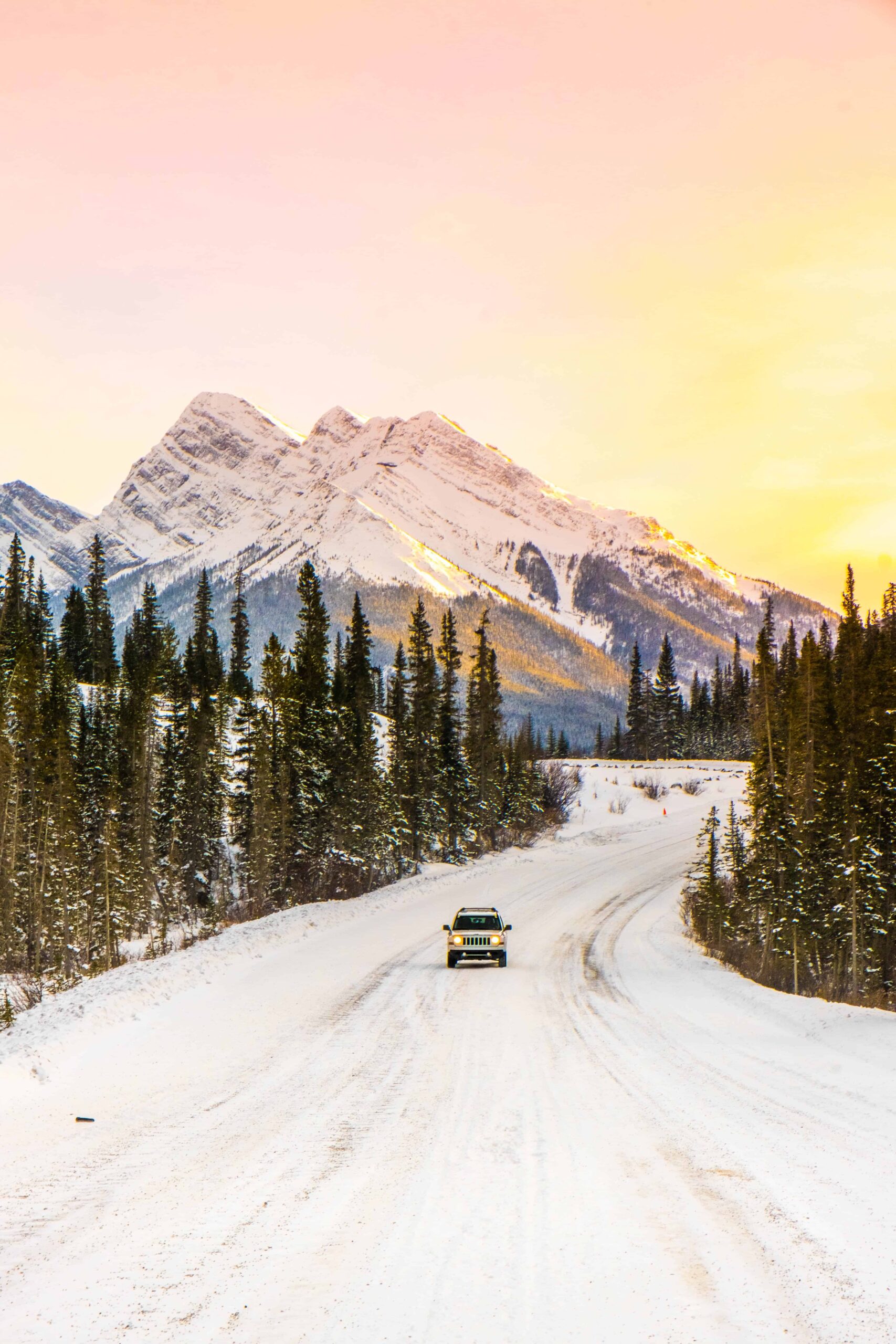
Before reaching Highway 40, you’ll come across the Blackshale Suspension Bridge, which is fun to do with the kids, and eventually Kananaskis Lakes. When you connect to the Kananaskis Trail, you’re in for even more beauty!
It’s important to note that the Smith Dorrien Trail, while not dangerous, is a gravel road and is incredibly dusty. It’s always corrugated, even after Parks does work on it, which can make for a bumpy ride. A 4×4 is not necessary, though a high-clearance vehicle wouldn’t hurt.
- How Long Does it Take to Drive: 3-5 hours, depending on stops.
- Things to Note: Speeding is never good, especially on this road.
Plan Your Trip to the Canadian Rockies
- Recommended Experiences: There are many things to do in the Rockies, but our top recommendations include the Banff Gondola and a cruise on Maligne Lake to Spirit Island in Jasper. If you want a stress-free way to get to Moraine Lake, we highly recommend looking into Moraine Lake Bus Company.
- Hotels in the Rockies: There are many places to stay, from luxury hotels to wilderness cabins. See all our favorites here.
- Get to Banff or Canmore Without a Car: The Banff Airporter provides fantastic service connecting you from the Calgary International Airport (YYC) to Banff or Canmore.
- Get Around: We suggest renting a car to get around. You can search for rental cars on Rentalcars.com. For a campervan trip, you can check prices and compare on Outdoorsy.
- Cheaper Airfare: We also use Going for airfare deals and travel credit cards to earn points on purchases. Those credit card points can be redeemed for free flights and hotels! Our favorite cards is the Capital One Venture X (which has an insane welcome bonus right now) as it has no foreign transaction fees.
- Hop On, Hop Off: This tour is taking Banff by storm. It’s exactly what it sounds like, hop on and off a bus to visit all the best attractions at your own pace!

